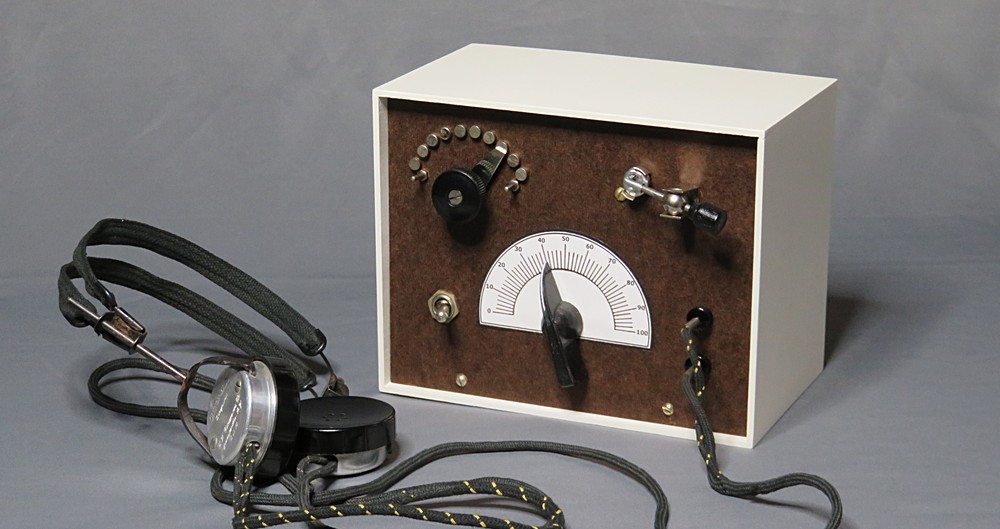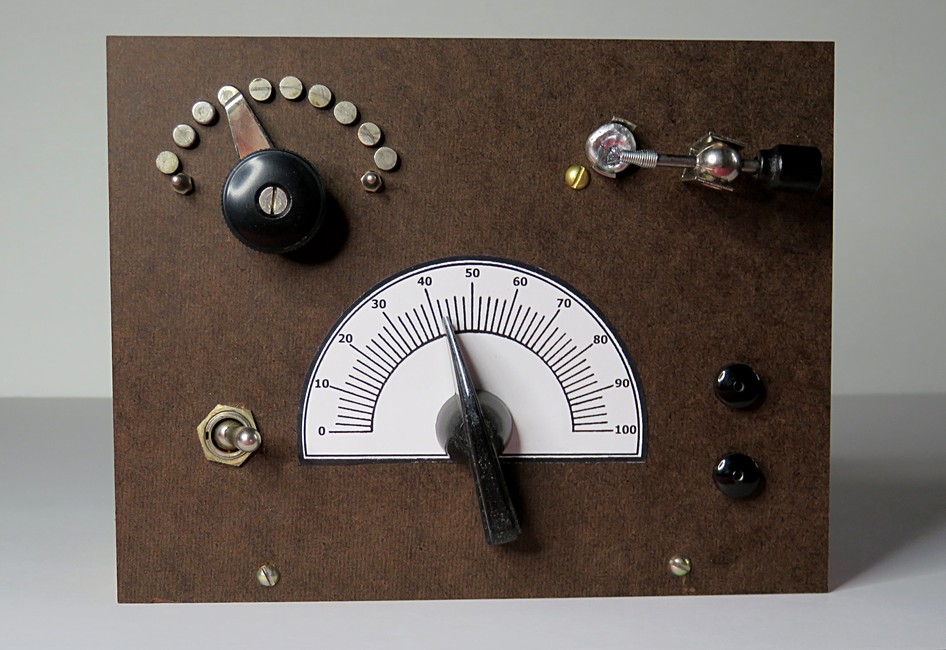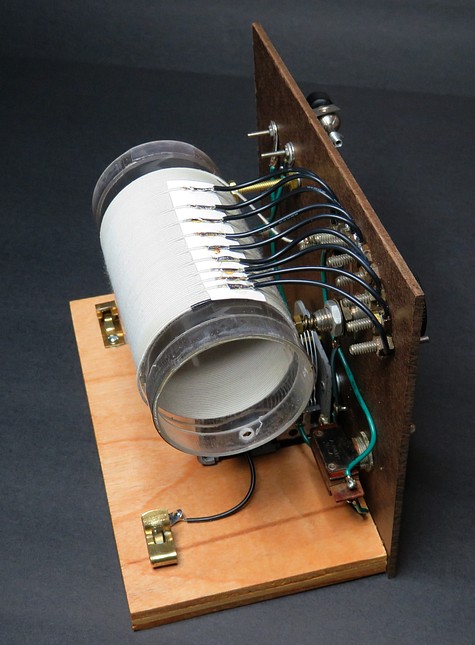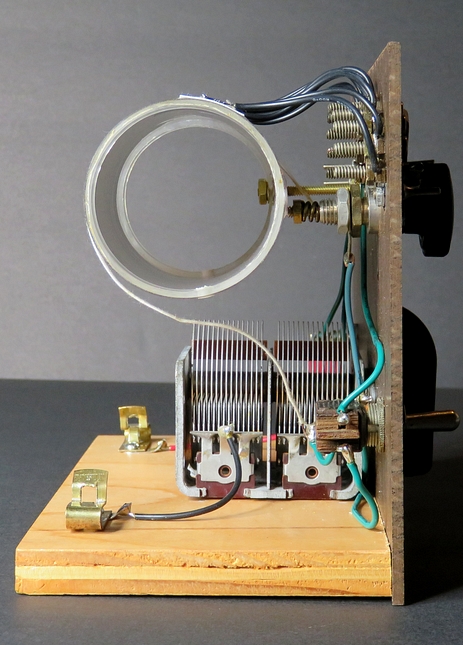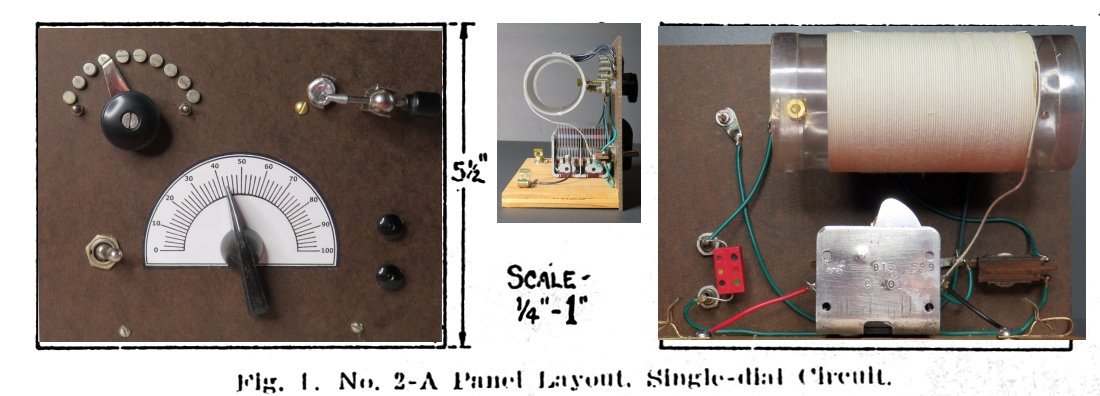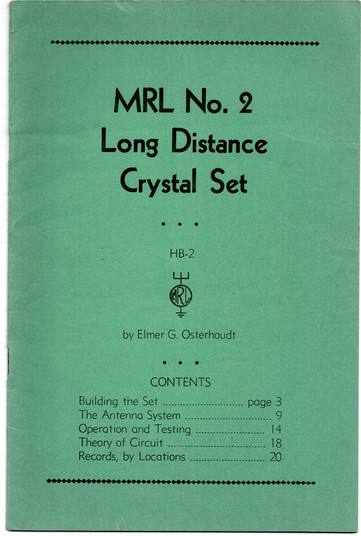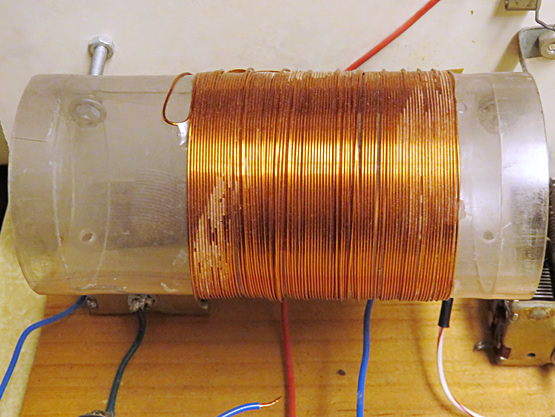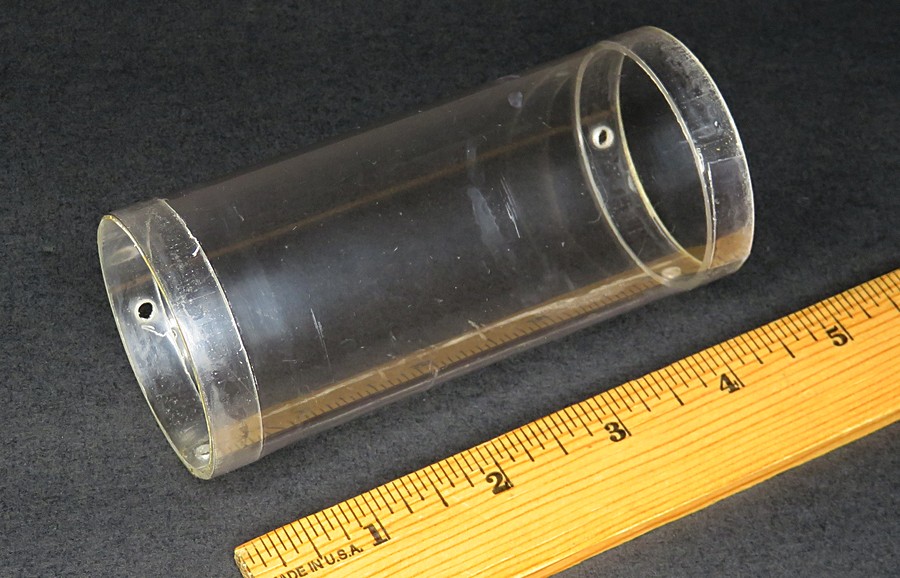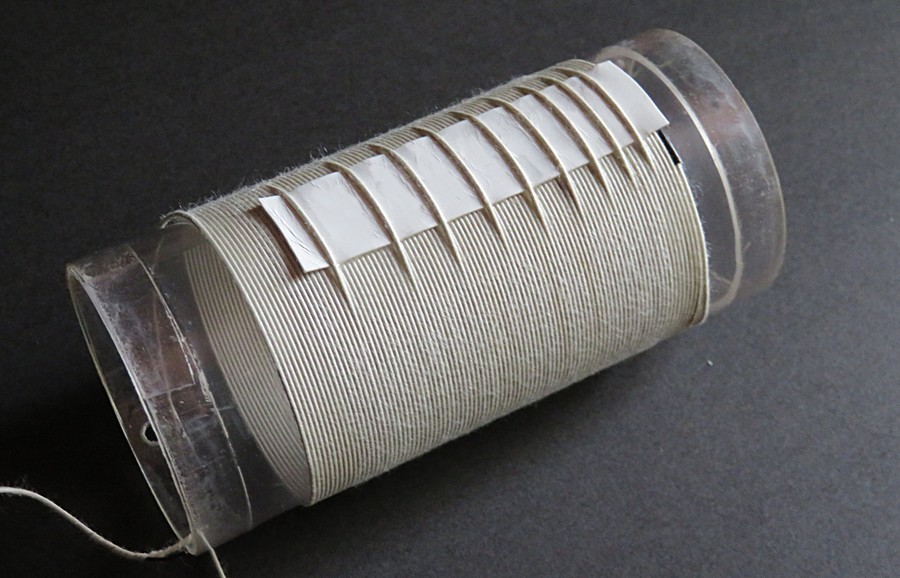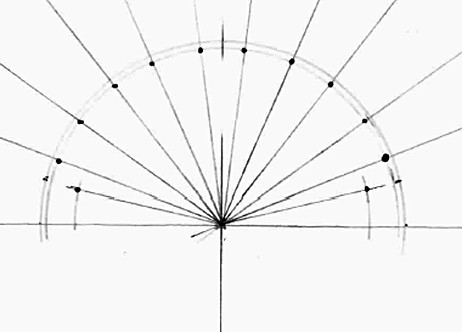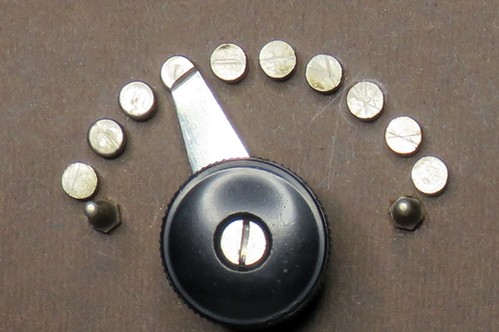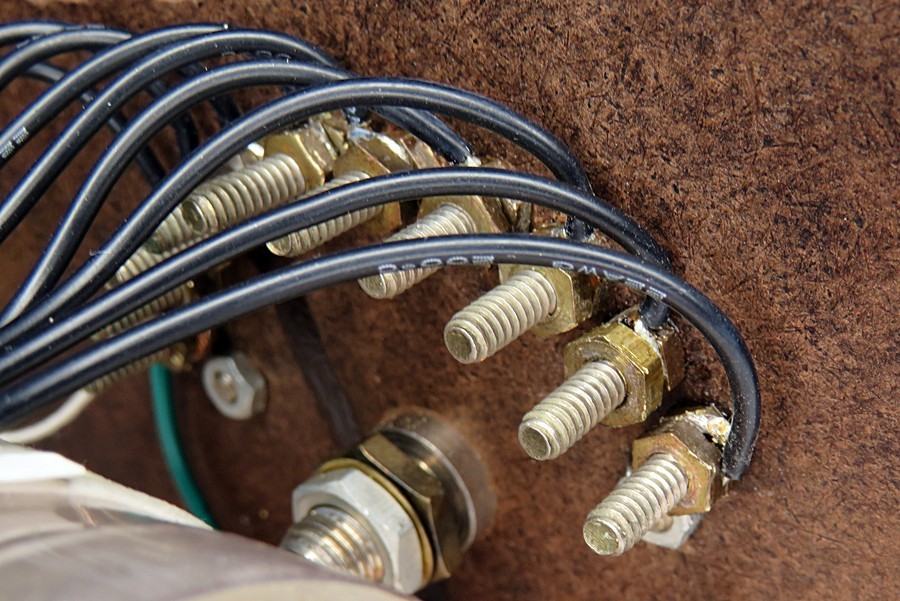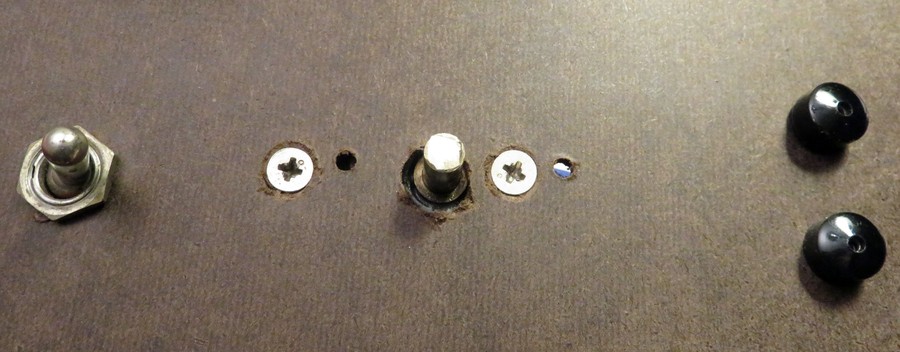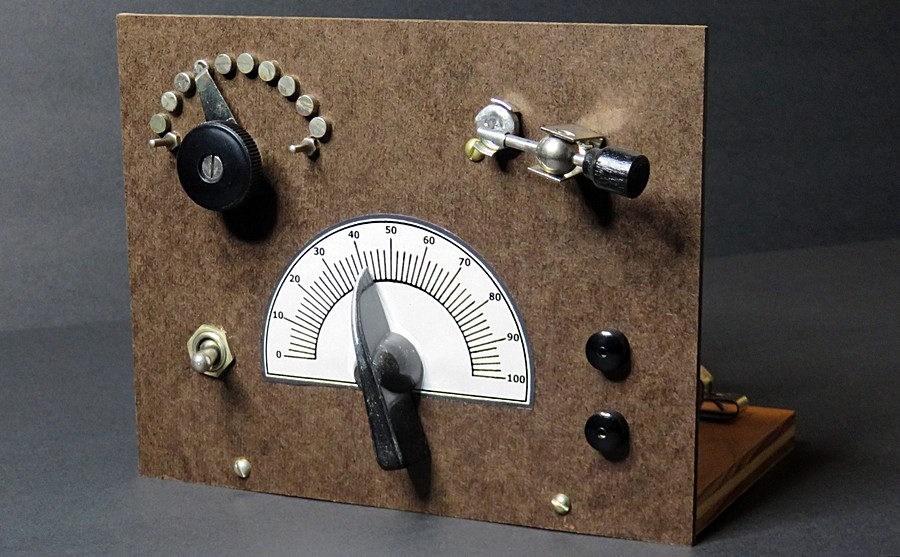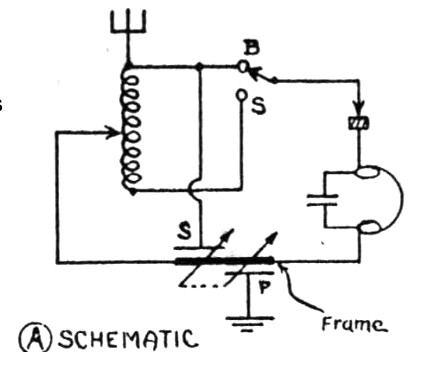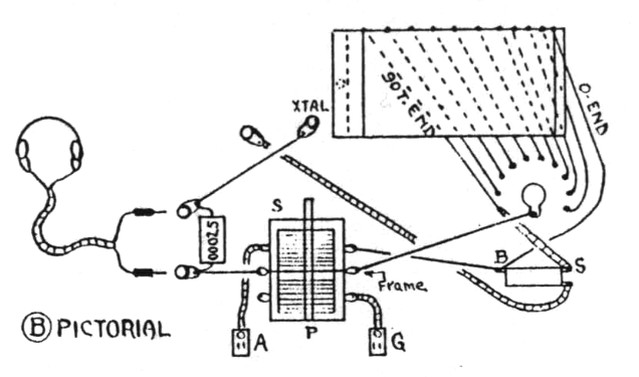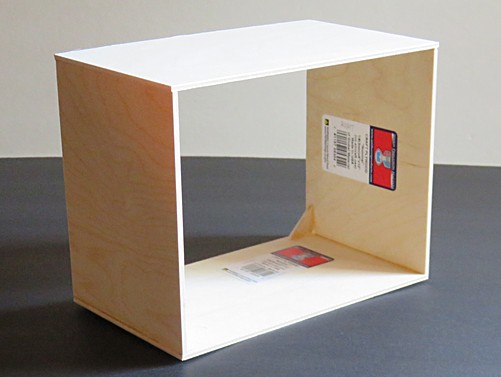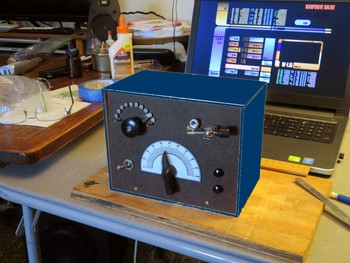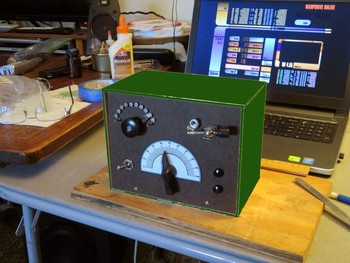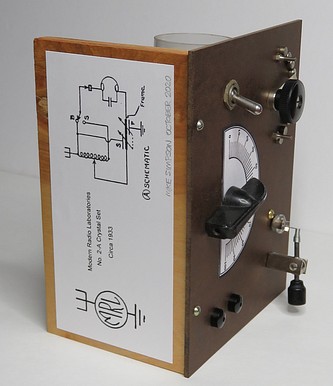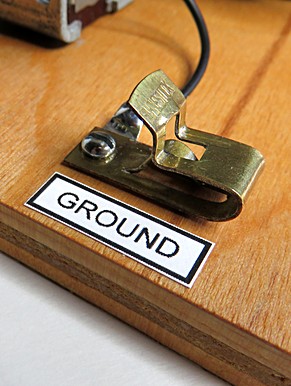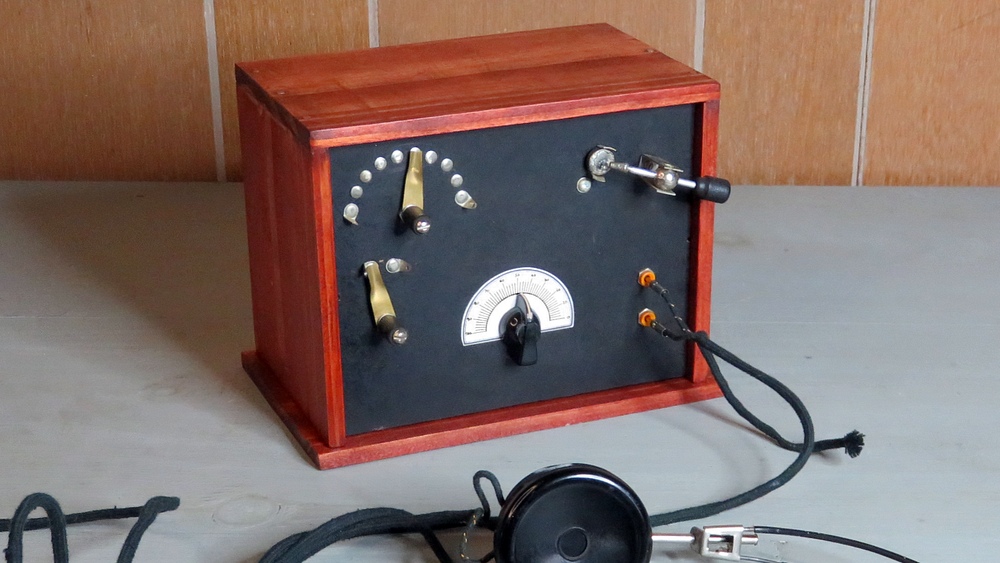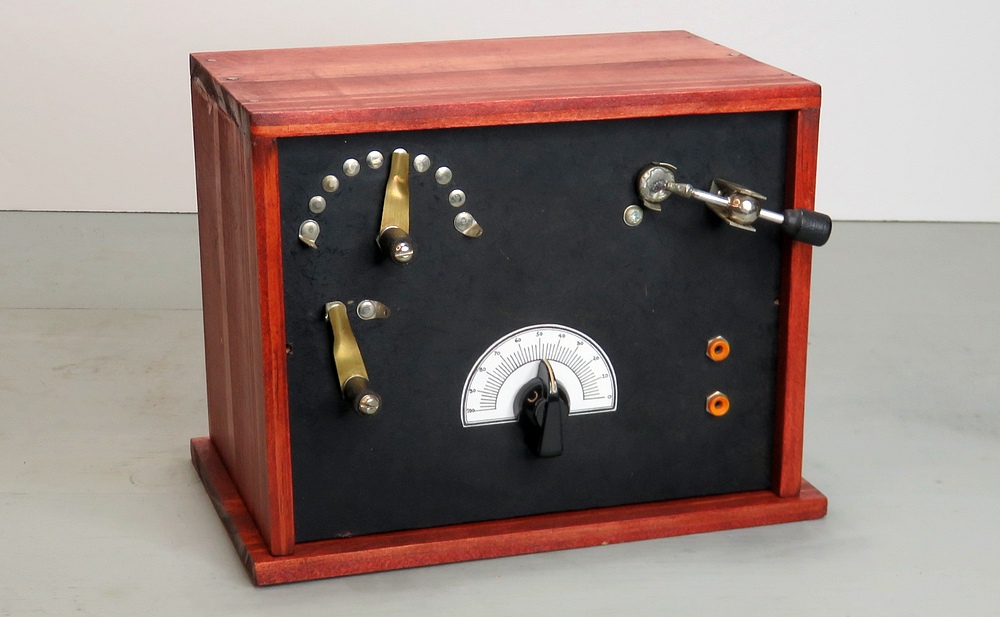|
|
|
|
|
|
|
A "No. 2-A Crystal Set" built from plans
published by Modern Radio Laboratories. |
|
|
|
|
|
MRL catalog entry from January, 1963.
The circuit was developed in 1933 by Elmer Osterhoudt.
Thousands of kits were sold until his death in 1987. |
|
|
|
|
|
| Because MRL once sold the 2-A as
a kit, Paul Nelson of MRL wanted me to state that
this is a "reproduction." However, this set was
built from plans written by Elmer Osterhoudt before
Paul Nelson was even born. It's a matter of
semantics. If it's not an MRL No.2-A crystal set,
what is it? Inquiring minds want to know. Only Paul
Nelson and his lawyers know for sure. |
|
|
|
|
|
|
This set was built in October of 2020. |
|
|
|
|
|
|
|
|
The parts and layout were adhered to as
closely as practical.
All parts are mounted to the front panel except the antenna
and ground connections. |
|
|
|
|
|
|
Instructions for building this set are found
in MRL HB-2 and DP-22A (click for the links). |
|
|
|
|
|
|
|
THE COIL |
|
|
|
|
| The coil form is from an actual
MRL No. 2 coil made in 1984 by Elmer Osterhoudt. It
was mounted in an MRL No. 2 crystal set. Over the
decades it had been baked and frozen repeatedly in a
garage and the celluloid shrank slightly, causing
the winding to come loose. Since this particular No.
2 wasn't a kit from MRL, or even built to the MRL
layout, I had no qualms about removing the coil.
Besides, a 2-A is basically a No. 2 set, though
Elmer stated that he had not been able to pick up
shortwave on the 2-A. |
|
|
|
|
|
| The coil of wire was removed and the form
was polished until it looked new. I couldn't help but think
that the last person who touched the form under the wire was
Elmer himself. I didn't find any fingerprints on it, or it
would be in a display case right now. |
|
|
|
|
|
| A new coil was wound using the
instructions in HB-2. A close inspection and comparison with
one of Elmer's actual coils reveals it is missing a piece of
black tape on the left side. Except for this, it is
indistinguishable from an MRL coil made by Elmer. |
|
|
|
|
|
|
The coil form is 2" in diameter by 4.5"
long. The coil is 90 turns of #22 cotton covered wire. Taps
are at turns 5, 10, 16, 23, 40, 50, 61 and 73.
Thousand of these coils for the No. 2 and 2-A were sold by
MRL. What was the formula Elmer used for the taps when he
made the first ones in 1933? After analyzing the coil I
found he used a ruler! The coil is tapped at 1/4,
1/2, 5/8, 3/4, 1½,
1¾,
2, and 2½
inches. |
|
|
|
|
|
|
|
|
THE SWITCH |
|
|
|
|
|
|
|
|
| I caused myself a lot of grief by putting
the switch points too close together, If solder lugs are
used, they touch each other and short out the coil. The
"fix" was to solder a small loop on the end of each wire. |
|
|
|
|
|
|
I caused myself more grief when it was
time to mount the variable capacitor. I followed Elmer's
instruction for making a template. Then the panel was marked
and the holes were drilled. When it was time to mount the
capacitor I found I had put the template on the wrong side
of the panel! The holes were a mirror of where they were
supposed to be.
Well, between the switch points being too close together and
the holes drilled in the wrong place, I was about to chuck
the panel into the trash. Unfortunately, it was the only
panel I had. |
|
|
|
|
|
| No problem; MRL made two different size
dial scales! I used a larger one, which was serendipitously
found in a box of odds and ends. It was scanned and "cleaned
up" in a photo editor, then a brand new scale was printed.
Naturally, I kept the original. |
|
|
|
|
|
| The brass screw holds the coil. It is the
only mounting point. Elmer's instructions say to use lock
washers to keep the coil from moving. He wasn't kidding,
they are absolutely required. |
|
|
|
|
|
|
|
|
|
The schematic and pictorial. The "BS" switch
cuts out political ads. (Actually, the "BS" switch is for
"Broad" and "Selective" tuning.) |
|
|
|
|
|
| In DP-22A Elmer said to mount
Fahnestock clips on the back of the crystal detector
stand so you can use a diode. I didn't want to do
this, because it meant cutting the screws. When
you're using these old parts you don't want to
damage anything, even a screw. I outsmarted myself
and used different screws! The Fahnestock clips are
1/2 inch. The diode is a 1N34A. |
|
|
|
| |
| |
| A CABINET |
| |
|
|
| The instructions say to make a
wooden box for the radio, sand it, coat it with
white paint and then give it a coat of Nu-Enamel.
This box is made from 1/8" plywood
from a craft store. To cut it, you just score it
(deeply) on each side and snap it.
Elmer wouldn't have said to use
Nu-Enamel if he didn't use it himself. It wasn't an
advertisement; he sometimes used brand names in his
literature, and they are clues into his personal
life. For instance, he said to scrub the front panel
of the MRL 1-Tube DX radio with Ajax. That tells us
the Osterhoudt's used Ajax Cleanser. |
|
| |
|
|
| Using the computer to decide the
color. I didn't use any of these colors. |
| |
|
|
| It looked good painted white, so
I decided to leave it white because the paint came out smooth for
once. |
|
|
|
|
I thought of several methods to
hold the radio in the cabinet. Obviously with the
radio in a cabinet you can't access the diode behind
the back panel, and you need a way to easily access
the diode. One idea was to use tiny Neodymium
magnets epoxied into the base, which would stick to
small "L" brackets in the cabinet. That way, you
could simply press the radio out of the cabinet.
Since it worked so well with the cat whisker, I just
removed the diode and screwed the base into the
cabinet with tiny screws. Translation: It was easier
and I'm lazy. |
|
|
|
|
|
|
|
|
LABELS |
|
|
| |
|
|
|
|
| |
Large label |
Small label |
Click image to
download. |
|
|
| Labels - The labels are printed
on heavy paper and glued on with an Elmer's Glue
Stick. This Glue Stick idea came from Mike Peebles.
Before Mike retired in 2020 he was the Elmer
Osterhoudt of the 21st Century. I actually argued
with Mike over this Glue Stick idea, saying it would
never hold up. His final comment was, "I never had
any trouble with it." I tried it, and years later I
can also say, "I never had any trouble with it." |
|
|
|
|
|
|
|
|
|
|
Here's a short video. It is just as boring as
the previous video on Page 1. |
|
|
|
|
|
|
|
|
Missing from the video is the local
"flamethrower," WNPV AM 1440, transmitting with 50,000
watts. After serving the
area for 60 years, it went off the air on April 30, 2020.
The station has five 165 foot antenna towers on 13 acres of
land near the North Penn High School, in Lansdale, PA. Also
on the site is a building housing the transmitter and the
studio.
Just prior to the station closing, the North Penn School
District, crying broke as usual, raised the North Penn area
property taxes by 3.1 percent. This violated the 2.9 percent
cap imposed by the state of Pennsylvania, but they just seem
to do whatever they want. They weren't even holding classes
at the time due to the virus. In July 2020 the school
district magically found 2.3 million dollars in its
"reserves" to buy the WNPV property.
According to a report by ABC news, Channel 27 WHTM, North
Penn was one of 12 school districts who played a "shell
game" of moving money around so they could always raise
taxes, though they had millions of dollars in their General
Funds. Ergo, 2.3 million dollars seemingly materialized out
of nowhere for purchase of the radio station.
This is a good thing, right? A high school with an actual
radio station, not some obsolete collection of low power
equipment connected to a wire antenna on the school roof.
Think of the educational possibilities, the revenue stream
from advertisers, and the fact that they could make it into
a cool station that would rival the two college stations in
Philadelphia, WRTI and WXPN.
Their plans are to demolish the station and use the property
as an athletic field and a parking lot. Now mommy and daddy
can park in the new parking lot and watch Johnny kick a
ball, and guess who has to pay for the parking lot and the
ball. In a newspaper article, the miscreants on the school
board actually commended EACH OTHER for spending the money
on the WNPV site. Well, they weren't going to get a pat on
the back from any taxpayer, that's for sure.
UPDATE: As of March 2023, WNPV is back on the air as part of
the North Penn HS communications program.
https://www.thereporteronline.com/2023/02/27/back-on-the-air-students-revive-wnpv-radio-station/
UPDATE: June 25, 2025. All but one of the
antenna towers come crashing down.
https://www.youtube.com/watch?v=EClWubdkNRg/ |
|
|
|
|
|
| |
| Don't like the cabinet? This one
made in 2023 houses an actual MRL 2-A sold by Elmer
Osterhoudt. |
| |
|
|
| |
|
|
| |
|
|
| Elmer said to make slots in the
sides and top so the front panel can slide into it. The bottom
screws on. |
| |
| |
| |
|
|
|
|


